






Collapsible content
You can play Digger’s Garden Match with 1-6 players, ages 4 and up.
Digger’s Garden Match is good for learning Counting skills as players count the number of shapes they matched on each turn and move their doggie bone forward on the scoreboard.
Digger’s Garden Match also helps players learn to identify Shapes and colors as they recognize and match colors and shapes to play their tiles.
Place the scoreboard on the table.
Each player chooses a doggie bone and places it on Digger’s house on the scoreboard.
Then place the starter tile (the one with paw prints) in the center of the table.
Place the rest of the tiles face down on the table, mix them up, and spread them out.
Each player picks two tiles and keeps them secret from the other players.
Note: If playing with 5 players, use all 25 tiles. Otherwise use only 24 tiles taking one random tile from the table and putting it back in the box, out of play.
The object of this game is to match tiles by color or by shape then count the shapes to see how many points you earn. The player with the most points when the tiles run out, wins the game.
On your turn, match one of the tiles in your hand to one or more of the tiles on the table. You may match the color, or the shape, or both color and shape.
On the first turn of the game, the starting player must match their tile to one of the colors on the starter tile.
On all other turns, players must play a tile that match a color, a shape, or both colors and shapes on all the sides of the tiles it touches.
To score, add up the number of shapes in the matching sides. Move your doggie bone that amount on the scoreboard.
Draw another tile. Now it’s the next player’s turn.
When all tiles, including the ones in your hand, have been played, game play ends. The player with the most points wins and earns the title of Top Dog!
Strengthen your counting, pattern matching and special reasoning skills to be Top Dog with Digger’s Garden Match!

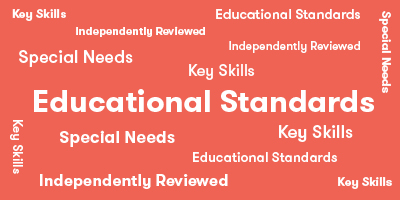
Head Start*
Language
- Listening & Speaking
- Shows progress in understanding and following simple and multiple-step directions.
- For non-English-speaking children, progresses in listening to and understanding English.
- Develops increasing abilities to understand and use language to communicate information, experiences, ideas, feelings, opinions, needs, questions and for other varied purposes.
Math
- Numeracy & Operations
- Demonstrates increasing interest and awareness of numbers and counting as a means for solving problems and determining quantity.
- Begins to make use of one-to-one correspondence in counting objects and matching groups of objects.
- Geometry & Spatial Sense
- Begins to recognize, describe, compare and name common shapes, their parts and attributes.
- Begins to be able to determine whether or not two shapes are the same size and shape.
- Shows growth in matching, sorting, putting in a series and regrouping objects according to one or two attributes such as color, shape or size.
- Patterns & Measurement
- Shows increasing abilities to match, sort, put in a series, and regroup objects according to one or two attributes such as shape or size.
- Begins to make comparisons between several objects based on a single attribute.
Science
- Scientific Skills & Methods
- Develops increased ability to observe and discuss common properties, differences and comparisons among objects and materials.
- Reasoning & Problem-Solving
- Develops increasing ability to find more than one solution to a question, task or problem.
- Grows in recognizing and solving problems through active exploration, including trial and error, and interactions and discussions with peers and adults.
- Develops increasing abilities to classify, compare and contrast objects, events and experiences.
Core Standard*: Math
Counting & Cardinality
- Know number names and the count sequence. Grade Level K
- Count to tell the number of objects. Grade Level K
Operations & Algebraic Thinking
- Understand addition as putting together and adding to and subtracting as taking apart and taking from. Grade Level K
Geometry
- Identify and describe shapes. Grade Level K
- Analyze, compare, create and compose shapes. Grade Level K
Mathematical Practice
- Look for and make use of structure. Grade Level PreK, K

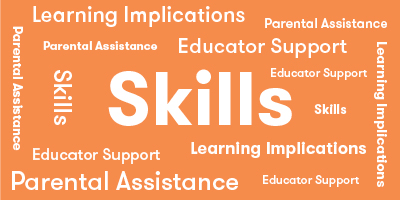
Explore
What Does Child Do To Use Skill In The Game?
Players examine the relationship of parts of the tiles to each other. They have to comprehend the rules of the game and how the pieces are combined.
How Parents Can Assist Learning
Parents can encourage children to examine each of the tiles and identify color, shape and number. Encourage children to look over the whole tile layout to decide where to place their tile. Also encourage kids to keep looking at the scoreboard during the game.
Learning Implications and Educator Support
Educators can give children several tiles to explore prior to starting a game. This allows them to experiment with different ways to combine the tiles. Educators can also encourage children to examine each of the tiles and identify color, shape and number. Encourage children to look over the whole tile layout to decide where to place their tile.
Determine
What Does Child Do To Use Skill In The Game?
Players determine the color, shape and number possibilities on each tile.
How Parents Can Assist Learning
Parents can encourage children to look at score board in order to understand how many points they need to win the game. Parents need to explain to children that they are matching color or shape, but they need to pay attention to number of total shapes for scoring.
Learning Implications and Educator Support
Ask children to identify color, shape and number on their tiles to be sure they are looking at all aspects. Educators need to explain to children that they are matching color or shape, but they need to pay attention to number of total shapes for scoring.
Compare
What Does Child Do To Use Skill In The Game?
Finding similarities is a key aspect of the game. Players need to examine characteristics of color and shape to find a match for one of these on the tiles.
How Parents Can Assist Learning
As a child chooses a tile, ask what characteristics match on that tile and which would give the most points.
Learning Implications and Educator Support
As a child chooses a tile, ask what characteristics match on that tile. For educators, the comparing and contrasting involves simple addition, color and shape matching and evaluation of potential scoring options.
Predict
What Does Child Do To Use Skill In The Game?
When the game is played with all tiles showing face up, Players can see which tiles might result in a higher score and pick those.
How Parents Can Assist Learning
While it is difficult to predict the moves of other players, parents can encourage kids to pay attention to the tiles the other players use. This may give them an idea of what the opponents' may do on their next turn.
Learning Implications and Educator Support
While it is difficult to predict the moves of other players, educators can encourage kids to pay attention to the tiles the other players use. This may give them an idea of what the opponents' may do on their next turn.
Plan
What Does Child Do To Use Skill In The Game?
Players understand the goal of the game and try to get the most points by picking and placing tiles that add up to larger numbers.
How Parents Can Assist Learning
Point out how far they need to go to complete the game and encourage them to try to get as many points as they can in each turn. Help children look for opportunities to play a tile in such a way as they can play their remaining tile on the next turn.
Learning Implications and Educator Support
There is light planning in Digger's Garden. Educators can encourage children to look closely at both tiles and the game board in order to decide which tile to play and which to hold for a later turn. Help children look for opportunities to play a tile in such a way as they can play their remaining tile on the next turn.
Experiment
What Does Child Do To Use Skill In The Game?
Players experiment mentally by imagining placing tile in various positions.
How Parents Can Assist Learning
Parents can allow children to place different tiles on board to try out options before deciding on which tile to play.
Learning Implications and Educator Support
Educators can help children with their strategic thinking by encouraging them to change perspectives, i.e. imagine what an opponent might do. This will help them anticipate which is essential to planning and prediction.
Practice
What Does Child Do To Use Skill In The Game?
With each turn players practice a strategy. They will learn which decision, i.e. tile placement, generates a greater score.
How Parents Can Assist Learning
Once children start using a strategy, comment on what they are doing. They need to know they have a good strategy.
Learning Implications and Educator Support
Educators can encourage children to practice in order to master strategic elements of the game.
Solve
What Does Child Do To Use Skill In The Game?
Players may watch other players to see how they get a larger number of moves for their dog bone
How Parents Can Assist Learning
Ask children what they are thinking as they play. Make suggestions. For example, before the child places a tile, say, "Where would you put this one? Count how many moves you get. How about this one? Where would you place it? Which one gives you more moves?" Many children just want to make a match. They are not analyzing the move of their dog bone. Parents can encourage this type of thinking.
Learning Implications and Educator Support
Educators can help children prioritize options to score the most points. Encourage and, if necessary, assist children with testing their tiles by changing locations and rotating to see which position scores the most points.
Review
What Does Child Do To Use Skill In The Game?
If encouraged, players may examine prior moves in order to try to find plays that give them a larger number of moves of their dog bone.
How Parents Can Assist Learning
Ask children to look back at what they have done. What tile placements resulted in the best moves of their dog bone?
Learning Implications and Educator Support
Educators can use of review to help kids evaluate tiles placements and scoring results, helping them to reduce impulsivity and increase potential for higher scoring decisions in the future.
Demonstrate
What Does Child Do To Use Skill In The Game?
Players may verbalize their thinking when they place a tile, if encouraged. This will often help peers understand the game.
How Parents Can Assist Learning
Ask children to explain to adults or peers why one tile will be a better choice than another.
Learning Implications and Educator Support
Ask children to explain to adults or peers why one tile will be a better choice than another.
*Data compiled from CCSSI ELA Standards, WA Science Standards, and Washington Social Studies Standards

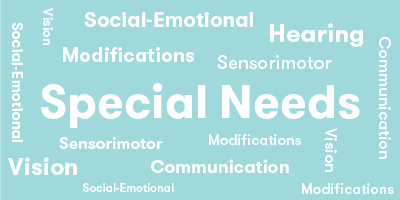
Cognitive
Suggestions for How to Modify Play Experience
Lower functioning children may concentrate on matching just color. After they can do this, match shapes. If they are matching color and match shape instead, give them credit, but point out what they matched. Give them a high-five for noticing the shapes.
Every time the child lands on or passes a five-divisible number on the board, review counting by fives to get to a number (e.g., point to 5, 10, 15) then count by 1's (16, 17, 18). This will help the child learn to count by fives.
For children who are advanced, let them match color, shape and number. This requires focus on three characteristics at the same time, which is higher level.
Communication
Suggestions for How to Modify Play Experience
To practice language, ask children to explain what they matched. What did they see that was alike?
Work on vocabulary for color, shape and number. Include a hexagon and count the sides.
Explain the directions individually to the child who needs practice with communication. Then ask this child to teach the game to the other children. Assist the explanation only minimally to clarify. This not only builds communication ability, but also confidence in interaction.
Sensorimotor
Suggestions for How to Modify Play Experience
Use pieces of paper on the floor as the score board and a pillow or toy as a place marker. Let the child place the papers around the room in a path. After figuring out the number of moves they get by placing their tiles, they can walk down the path on the same number of pieces of paper. This is gross motor movement paired with counting.
Teach children how to count in sign language. This is motivating to children and requires finger isolation, so they are practicing fine motor skills as well as counting.
Social Emotional/Behavioral
Suggestions for How to Modify Play Experience
Encourage children to play as a team. One person can match the tiles and the other person can move Digger’s bone on the board. They can keep these roles or trade if they want.
Ask the shy child to explain how to play the game to other children. They can demonstrate as the adult talks if they don't like to talk in front of others. This will build their confidence.
Designate a "Cheer Leader". Select a shy child or one who needs to be more confident. Every time someone lays a tile that touches two other tiles, they lead a cheer. "One, two! Good for you!" This helps the child be supportive of peers and helps peers appreciate their initiation.
Vision
Suggestions for How to Modify Play Experience
Use pieces of paper on the floor as the score board and a pillow or toy as a place marker. Let the child place the papers around the room in a path. After figuring out the number of moves they get by placing their tiles, they can walk down the path on the same number of pieces of paper. This is easier to see and makes the movement more meaningful.
Hearing
Suggestions for How to Modify Play Experience
No modifications required.
Teach children how to count in sign language, so the other children can understand the hearing impaired child's communication.
*Data compiled from CCSSI ELA Standards, WA Science Standards, and Washington Social Studies Standards

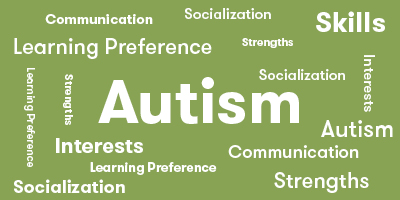
Autism Strengths & Interests
Short Summary of Strengths & Interests
- Likes activities based on colors and shapes.
- Has a good memory for visual details.
- Is good at making visual matches and patterns.
Is good at matching visual items
Is This Game Appropriate? Yes
Description
This game is based on matching simple shapes and colors. Children with these skills can enjoy demonstrating their abilities.
Has a good memory for sensory details, including visual, touch, taste and smell
This game is not appropriate
Has a good memory for words, phrases and dialouge
This game is not appropriate
Has a good memory for pictures, numbers and patterns
This game is not appropriate
Likes to put things in order or a sequence
Is This Game Appropriate? Yes
Description
While Digger's Garden Match is primarily about matching, it also involves ordering shapes and colors together. Children who like putting like objects together or making puzzles will be able to apply those skills to this game. Learns through visualizing or "replaying" actions in their mind
Learns through visualizing or "replaying" actions in their mind
This game is not appropriate
Likes activities with rules, such as math and phonics
This game is not appropriate
Is very concrete and literal
Is This Game Appropriate? Yes
Description
Digger's Garden Match does not require abstract or analogous thinking. All of the tiles have clear color sections and shapes in those sections. Thus, children who prefer concrete and literal activities may feel comfortable with this game as they attempt to match colors or shapes. Learns in small "chunks" (for example, phone numbers are 3 chunks of number xxx-xxx-xxxx that are combined together)
Learns in small "chunks" (for example, phone numbers are 3 chunks of number xxx-xxx-xxxx that are combined together)
This game is not appropriate
Is good at nonverbal reasoning and logic
This game is not appropriate
Likes spatial problem solving
This game is not appropriate
Can read well with good vocabulary, though may not fully comprehend content
This game is not appropriate
Likes to use and has good fine motor skill
This game is not appropriate
Likes established routines or set ways of doing things
This game is not appropriate
Likes manipulating, constructing or building things
Is This Game Appropriate? Yes
Description
Some children with autism enjoy building or constructing things, which involves manipulating and changing the orientation of shapes to make them fit together. Players can hone these skills as they rotate their Garden Match tiles looking for the best match to those already on the table Likes to us and has good musical abilities
Likes to use and has good musical abilities
This game is not appropriate
Likes to use and has good drawing skills
This game is not appropriate
Autism Special Considerations
Appears to ignore other's communication and/or has difficulty giving eye contact to a communication partner
Is This Game Appropriate for Child with Characteristic? Yes
Can Child with Characteristic Play Game w/o Modification? Yes
Strategies for Developing Compensatory Skills:
Look at the game instead of each other
Rather than speak, sing communication between turns or when giving short directions. Music attracts the child's attention and interest.
Use unusual or exaggerated inflection to begin a communication about the game. This attracts the child's attention.
Has difficulty understanding complex verbal directions
Is This Game Appropriate for Child with Characteristic? Yes
Can Child with Characteristic Play Game w/o Modification? No
Strategies for Developing Compensatory Skills:
Break down directions into small steps. Don't go through all the directions at once.
Combine short verbal instructions with visual and physical examples of each step.
Use photos to illustrate what needs to be done. These can be taken ahead of time. The combination of pictures and actions reinforces learning the steps. Also, take pictures during the game for use in later discussions about the game and what happened.
Check for comprehension by asking the child to show you what to do next.
Let children read the directions as they are explained. Visualizing the words is often a stronger learning method for children with autism.
Uses vocabulary inaccurately or demonstrates echolalia (repeating another's speech)
Is This Game Appropriate for Child with Characteristic? Yes
Can Child with Characteristic Play Game w/o Modification? Yes
Strategies for Developing Compensatory Skills:
Respond to immediate echolalia (repeating what was just said) by rephrasing the child's response into a correct format, so the child can hear and repeat that phrase. For example, assume you are playing with a child named Andy and you say, "Your turn," and Andy repeats, "Your turn." You can say, "It's Andy's turn. You say, my turn." This allows the child to hear and repeat the correct response. Eventually, the child will pick up the pattern of response.
Delayed echolalia (repetition of previously heard comments) may have a hidden meaning or association. Look for connection in the phrase used to the current situation. For example, the child says, "After these messages we'll be right back!" Think what the repeated phrase is associated with for the child. Try to interpret what is meant and rephrase it for the child. For example, you might respond by saying, "It sounds like you want a break for a few minutes. Is that what you mean? You can tell me, 'I need a break.'"
Gets stuck repeating a verbal topic or physical actions and/or has difficulty attending to others' actions or topic.
Is This Game Appropriate for Child with Characteristic? Yes
Can Child with Characteristic Play Game w/o Modification? Yes
Strategies for Developing Compensatory Skills:
Incorporate a preferred topic into the game to increase motivation. For example, if the child is fixated on a particular character, like a favorite superhero, ask what the character would do if they were playing? For example, place an action figure of the favorite superhero on the number 50 and say, "You need to get the dog bone to [favorite superhero] so he can get it to Digger!"
Practice phrases for commenting on others' play actions. For example, you say to Joe (who is playing with you), "Right on! You got a total of 5 on that play ." Then ask the child, "What did Joe do? "
Remind children about listening and watching others' before making their own comment or action.
Use a motivation toy or object to gain the child's attention. For example, a preferred wind-up toy can be placed on the board when it is the child's turn. The child gets to wind up the toy after completing their turn.
Use the child's finger to point to what needs attention. They attend to their finger first, and then the adult can point out the object they are pointing at. Extend the child's action to make a correct response. For example, if the child gets stuck on always matching one color, the adult can say, "Try another color. Look at the triangles. Do they match anything?"
Reinforce attention and actions by commenting on what was done correctly. For example, "I love how you looked carefully at the tile before placing it!"
Has difficulty producing speech/communication
Is This Game Appropriate for Child with Characteristic? Yes
Can Child with Characteristic Play Game w/o Modification? Yes
Strategies for Developing Compensatory Skills:
Use augmentative communication, such as picture cards. For example, a picture of person pointing to another person means "your turn."
Use gestures and sign language to illustrate actions or concepts. For example, use the sign for 'finished' (two hands facing down, spread out from the middle of the body), point to the next player and say, "I'm done. It's your turn." The signs and gestures add a visual component to support understanding. The game does not need much communication, but signs could be used for the various symbols and counting.
Extend the child's sounds into words or words into phrases to provide a model. For example, if the child says, "tria" the adult can say, "triangles. You matched TWO TRIANGLES."
Provide at least 10 seconds wait time for the child to process or produce responses. It may take longer to formulate a thought or response for children with special needs.
Has difficulty sequencing multi-step actions and/or doing complex abstract tasks
Is This Game Appropriate for Child with Characteristic? Yes
Can Child with Characteristic Play Game w/o Modification? No
Strategies for Developing Compensatory Skills:
Use physical actions to walk through steps numerous times, with less support for the final step each time. This is called "shaping." For example, walk through the steps of looking at the cards and matching the symbols, and counting the total, and moving the bone. Then do the first steps together and at the last step say, "What do you do next?"
Make picture cards of each step of a game, so the child can refer to the pictures for the next step in the sequence.
Demonstrates difficulty initiating and maintaining social interactions
Is This Game Appropriate for Child with Characteristic? Yes
Can Child with Characteristic Play Game w/o Modification? Yes
Strategies for Developing Compensatory Skills:
Develop a social story to be read at the start of a game. A social story is a short booklet that illustrates how a child can use positive social skills. It includes two to five descriptive statements and a directive statement. For example: "When I watch others, I will know when it is my turn. Others like me when I take turns. I will watch what others do with their pieces and listen to what they say. Others like it when I talk about the game." Add photos or drawings of the child doing the actions described in the story.
Role play social situations and reinforce appropriate words and actions. For example, role play finishing the game and congratulating the winner. Or, role play commenting on another player's turn. For instance, "Good play, Matt!"
Use video feedback of positive social behaviors. Video of actual play enables children to see what they or others did. Appropriate actions and interactions can then be discussed.
Acts out or demonstrates avoidance behaviors when frustrated, overwhelmed, or needs more sensory input.
Is This Game Appropriate for Child with Characteristic? Yes
Can Child with Characteristic Play Game w/o Modification? No
Strategies for Developing Compensatory Skills:
Reduce extraneous noise or allow the child to wear head phones or ear plugs if loud sounds cause anxiety.
A weighted vest worn during the game may provide additional pressure input and thus reduce fidgeting due to sensory needs. Pressure can be calming when used for no more than 20 minutes at a time.
Practice a phrase to ask for help and role play situations in the game where it is needed.
Provide techniques for self-calming, such as holding a special toy.
Allow time for movement. For example, a child who needs to move frequently can be given an opportunity to 'celebrate' their turn by running around the table or jumping up and down 10 times.
Has short attention span for non-preferred activities
Is This Game Appropriate for Child with Characteristic? Yes
Can Child with Characteristic Play Game w/o Modification? No
Strategies for Developing Compensatory Skills:
Provide a break when needed.
Use "when...then" phrases. For example, "When you take your turn, then I'll let you play with your toy."
Frequently remind the child of the goal of the game. "You want to get a big number when you add your symbols. Then you get to move your bone further!"
Incorporate a motivating activity as part of the play. For example, each player gets to manipulate a fun 'fidget' toy, such as a stress ball or squeeze toy.
Needs sameness or consistent routines and/or has difficulty with transitions from one activity to another
Is This Game Appropriate for Child with Characteristic? Yes
Can Child with Characteristic Play Game w/o Modification? No
Strategies for Developing Compensatory Skills:
Play games at the same time every day, so the child anticipates the game routine.
Change the location of the game, so the child may play in different rooms, at the table, or on the floor. This will build tolerance for variation.
Prepare the child ahead time for the introduction of a new game. Talk about aspects that will be motivating for the child, and let them explore the parts of the game before setting out the whole game. For example, examine the bones and tiles.
Provide a structure for placement of game pieces that can be the same each time the game is played. For example, have a specific location for where the board goes, the tiles, etc.
Provide choices for how the child can be involved in set up or clean up. For example, you might ask, " Do you want to pass out the bones or the tiles?" Involve the child verbally and with actions for the transition to the game table or at the end of game play. For example, you might say, "Let's look at the pictures on the game box and guess what it is about."
Use an object cue. Let the child hold an object from the game or activity you want to introduce prior to the transition. For example, if you were intending to play Digger's Garden you would hand the child a bone from the game and say, "Look here is a bone. Let's see what game we can play?"
Has difficulty understanding others' feelings, intentions, and the reasons for others' actions.
Is This Game Appropriate for Child with Characteristic? Yes
Can Child with Characteristic Play Game w/o Modification? Yes
Strategies for Developing Compensatory Skills:
Model and point out what others are feeling and comment on their facial expressions or words.
Discuss what causes feelings in others. For example, "You are happy because you got to move your bone 5 steps. But, look at Joe's face. He is not happy because he only moved 2 places."
Ask child to explain their own feelings and intentions.
Ask child to explain why other players did specific actions in the game.
*Data compiled from CCSSI ELA Standards, WA Science Standards, and Washington Social Studies Standards

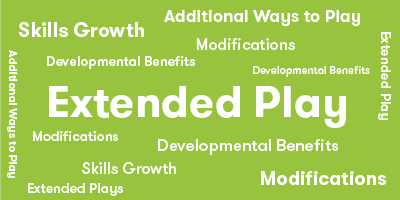
Extra Ways to Play the Game
Hide the colored bones around the house, and have the children be dogs sniffing on their hands and knees. As they sniff and search for bones, the adult tells them if they are "hot" (getting closer) or "cold" (getting further away). Adults can also add spatial clues, such as "left," "right," "go two feet straight ahead, then turn," etc.
Materials Needed
No additional materials needed.
Developmental Benefits
Young children love to pretend to be animals. This modification allows them to practice spatial awareness along with gross motor skills. The child has to listen carefully and follow directions. Playing with the adult has the additional benefit of encouraging positive adult-child interaction.
Extra Ways to Play the Game
Make patterns with the shape tiles. For example, find the tiles to make a straight line across the room, a large circle, a square, etc. Name a shape (a snake, an elephant, etc.) and see if they can make it with the tiles.
Materials Needed
No additional materials needed.
Developmental Benefits
Children need to visualize what is needed to make the shape. Creating patterns is part of mathematics. Using imagination is essential to developing cognitive skills like creative problem-solving and emotional skills like empathy.
Extra Ways to Play the Game
Place the tiles around the room on the floor. The adult keeps several tiles. Each child has a dog bone to mark his "home." The adult calls out a color/shape (example, 2 orange squares) and the children run to find a tile with 2 orange squares. The child who finds it takes the tile and leaves it at her home dog bone. Choose a time frame or a number of shapes to set the limit (5 minutes or 15 shapes). The winner has the most tiles in their doghouse.
Materials Needed
No additional materials needed.
Developmental Benefits
This modification encourages the cognitive skills of visual spatial memory. Children also learn shape, color and number recognition, up to three items. Children also need to physically move to find the discs, which helps develop gross motor functioning.
Extra Ways to Play the Game
Use the box lid as a target. Have children and adults take turns tossing the bones into the box lid. Change the distance to make it simpler or harder. Keep score. If all fall outside the lid, measure the distance away from the box to see who got closest.
Materials Needed
No additional materials needed. Or add a measuring tape.
Developmental Benefits
Tossing requires visual spatial and fine motor skills. Children can also learn about measurement using an object (such as a shoe) or a ruler to begin to understand distance relationships. The competition with adults is also fun.
Extra Ways to Play the Game
Hide 10 tiles around the house. Use the board from the game and add a die. Each child throws die and moves their bone the number on the die. Whenever a child lands on a 5-divisable number, the adult gives a clue for where to find a tile. The child then has two minutes to try to find it. To make it harder, have 4, 5, and 6 go forward, and 1, 2, and 3 go backward.
Materials Needed
Add one die.
Developmental Benefits
This variation can build understanding of counting by five's, as well as simple addition and subtraction. Providing clues builds language comprehension. Adults can make clues as easy or hard as they want. Movement around the house to find the tiles provides a motor component and increases motivation and persistence.
*Data compiled from CCSSI ELA Standards, WA Science Standards, and Washington Social Studies Standards
- Choosing a selection results in a full page refresh.
- Opens in a new window.










